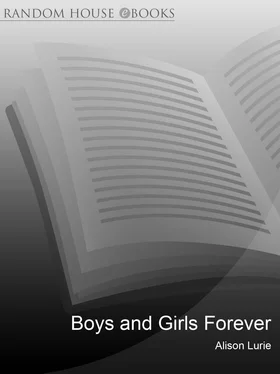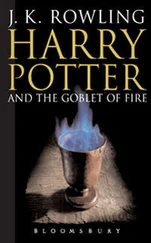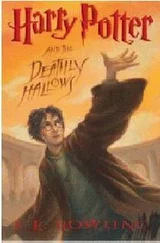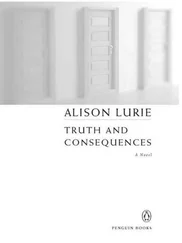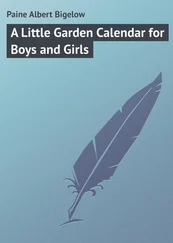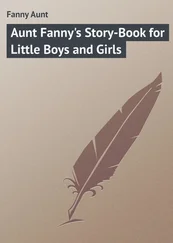Ibid., p. 394.
7
.
Ibid., p. 403.
8
.
Spark,
John Masefield
, p. 45.
9
.
Lamont,
Remembering John Masefield
, p. 9.
10
.
Ibid., p. 14.
11
.
Masefield,
So Long to Learn
, p. 10.
12
.
Ibid., p. 9.
13
.
Ibid., p. 10.
14
.
Babington-Smith,
John Masefield
, p. 17.
15
.
Masefield,
So Long to Learn
, p. 17.
16
.
Masefield,
New Chum
, pp. 170–76.
17
.
Babington-Smith,
John Masefield
, p. 32.
18
.
Ibid., p. 40.
19
.
Quoted in Sternlicht,
John Masefield
, p. 101.
20
.
Masefield,
Martin Hyde
, p. 1.
21
.
Ibid., pp. 75.
22
.
Ibid., pp. 66.
23
.
Ibid., pp. 66–67.
24
.
Ibid., pp. 165.
25
.
Ibid., pp. 222–23.
26
.
Ibid., pp. 299–300.
27
.
Masefield,
Jim Davis
, p. 175.
28
.
Ibid., p. 5.
29
.
Masefield,
The Midnight Folk
, p. 140.
30
.
Ibid., p. 38.
31
.
Ibid., p. 45.
32
.
Lamont,
Remembering John Masefield
, pp. 11–12.
33
.
Masefield,
The Box of Delights
, p. 83.
MOOMINTROLL AND HIS FRIENDS
1
.
W. Glyn Jones,
Tove Jansson
.
2
.
Jansson,
Moominsummer Madness
, p. 28.
3
.
Jansson,
Moominland Midwinter
, p. 52.
4
.
Jansson,
The Exploits of Moominpappa
, p. 43.
5
.
Jansson,
Moominpappa at Sea
, p. 186.
6
.
Ibid., p. 7.
7
.
Ibid., p. 100.
8
.
Ibid., pp. 13–14.
9
.
Ibid., p. 25.
10
.
Jansson,
Tales from Moominvalley
, p. 123.
11
.
Ibid., p: 141.
12
.
Jansson,
Moominvalley in November
, p. 29.
13
.
Ibid.
14
.
Jansson,
Tales from Moominvalley
, pp. 46–47.
15
.
Jansson,
Comet in Moominland
, pp. 29–30.
16
.
Ibid., p. 180.
17
.
Jansson,
Finn Family Moomintroll
, p. 131.
18
.
Ibid., p. 135.
19
.
Jansson,
Moominpappa at Sea
, p. 137.
20
.
Ibid.
21
.
Jansson,
Tales from Moominvalley
, p. 14.
22
.
Ibid., p. 16.
23
.
Jansson,
Moominvalley in November
, p. 75.
DR. SEUSS COMES BACK
1
.
Theodor Seuss Geisel, quoted in Morgan,
Dr. Seuss and Mr. Geisel
, p. 81.
2
.
The number of rejections for
And to Think That I Saw It on Mulberry Street
varies from one account to another; Seuss himself once said that he could never remember whether it was twenty-seven or twenty-nine.
3
.
Seuss,
The Cat in the Hat, p
. 61.
4
.
Nel, “Dada Knows Best,” pp. 150–54.
5
.
Cott,
Pipers at the Gates of Dawn, p
. 28.
6
.
Philip Nel, however, suggests that Mayzie’s flower may be a visual metaphor for the imagination, and if so, the point of the story is that her original ideas are exploited by a money-grubbing agent (“Dada Knows Best,” p. 180).
HAROUN AND THE SEA OF STORIES
1
.
Fenton, “Keeping Up with Salman Rushdie,” p. 33.
2
.
Ibid.
3
.
Rushdie,
Haroun and the Sea of Stories
, p. 18.
4
.
Ibid., p. 26.
5
.
Ibid., p. 15.
6
.
Ibid., p. 79.
7
.
Ibid., p. 153.
8
.
Ibid., p. 102.
9
.
Ibid., p. 161.
10
.
Rushdie, in
The Wizard of Oz, BFI Film Classics
.
11
.
As Iff the Water Genie points out, the Hoopoe is a figure from ancient Near Eastern tales, where he “is the bird that leads all other birds through many dangerous places to their ultimate goal” (Rushdie,
Haroun and the Sea of Stories
, p. 64).
12
.
Rushdie,
Haroun and the Sea of Stories
, p. 107.
13
.
At one point, in an echo of
Through the Looking-Glass
, Haroun finds himself “standing in a landscape that looked exactly like a giant chessboard” (Rushdie,
Haroun and the Sea of Stories
, p. 73).
14
.
Rushdie,
Haroun and the Sea of Stories
, p. 185.
15
.
Ibid., p. 35.
16
.
Ibid., p. 37.
17
.
Ibid., p. 73.
18
.
Ibid., p. 129.
19
.
Ibid., pp. 192–93.
20
.
Ibid., pp. 82–83. The reference, apparently, is to the best-selling but rather simplistic children’s stories by Sarah Ferguson, the Duchess of York, which feature a flying helicopter called Budgie.
21
.
Rushdie,
Haroun and the Sea of Stories
, p. 155.
22
.
Wolf, “Haroun and the Sea of Stories,” p. 43.
THE PERILS OF HARRY POTTER
1
.
Time
, p. 72.
2
.
Rowling,
Harry Potter and the Sorcerer’s Stone
, p. 56.
3
.
Ibid., p. 66.
4
.
Ibid., p. 118.
5
.
The most striking exception to this rule occurs in C. S. Lewis’s Narnia series, in which the wicked, power-mad figure is female.
6
.
Interview in
Time
, p. 73.
7
.
Slate
, 24 August 1999.
8
.
New York Times Book Review
, p. 39.
9
.
Slate
, 25 August 1999.
10
.
Zipes, “The Phenomenon of Harry Potter,” pp. 170–89.
11
.
Arms,
Pokemon and Harry Potter
, p. 74.
12
.
Abanes,
Harry Potter and the Bible
, p. 6.
13
.
Ibid., p. 137.
14
.
Ibid., p. 260.
15
.
Ibid., p. 66.
16
.
Ibid., p. 130.
17
.
Ibid.
18
.
Carvajal, “Marketing ‘Narnia,’” p. 3.
19
.
Abanes,
Harry Potter and the Bible
, p. 241.
20
.
Lewis,
The Last Battle
, p. 154.
21
.
The British title of the book is
Harry Potter and the Philosopher’s Stone
; the American edition substituted “Sorcerer” for “Philosopher” on the questionable assumption that most American readers know nothing about the history of alchemy and think of philosophy as dull.
WHAT FAIRY TALES TELL US
1
.
MacDonald,
The Light Princess
, p. 69.
2
.
DeMorgan, “A Toy Princess,” p. 153.
3
.
Carter, “The Courtship of Mr. Lyon,” p. 49.
4
.
Irving, “Rip Van Winkle,” p. 82.
5
.
Hawthorne, “Feathertop,” p. 272.
6
.
Baum, “The Glass Dog,” p. 41.
Читать дальше
